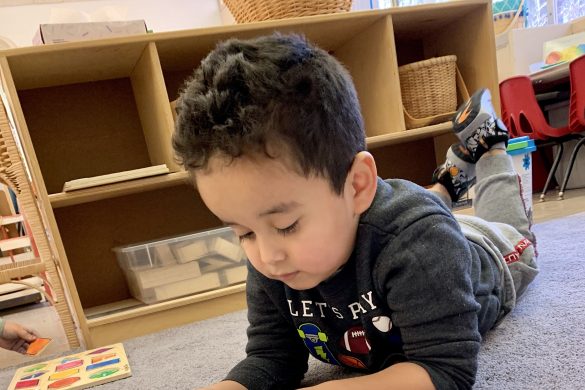Number: Adding and Subtracting
Knowing that groups of objects can be combined and separated is part of children’s everyday world. For example, if there are 4 glue sticks at the art table and 3 are taken, there is one left for you. By 4 or 5 years of age children can recognize that smaller numbers are ‘hiding inside’ larger numbers, seeing, for example, 2 and 3 hiding inside 5 (as are 4 and 1). Children needs lots of experiences with these ideas and games are a great way to support them. Try some of the ones suggested here!
Why is number and operations important in early math? Sub-Topics
Composing and decomposing number recognizing that numbers (or sets of objects) can be combined or separated to make another number. Through everyday experiences, toddlers learn that a whole is made up of smaller parts and that the parts are smaller than the whole. (There can be 4 paintbrushes and if 3 of them are in use, only 1 paintbrush is left). Children also learn early on that objects can be combined in different orders to produce the same result—you can put the 3 blue trucks or the 3 red trucks in the bucket first but you still get 6 trucks (commutative property). By 4 or 5 years of age children can recognize that smaller numbers are ‘hiding inside’ larger numbers such as 2 and 3 are hiding inside 5 (as are 4 and 1). This skill is the early stages of understanding addition and subtraction.
Children must have experiences that help them develop a ‘mental number line’—a spatial representation of quantity that helps them reason about which is more and how much more. Children can figure out that 7 is more than 5 because 7 comes later in the counting sequence and on the number line. Later, they can determine how many more by knowing that 5 is contained in 7 (a part of 7) and the “other part”, the leftover, is 2. Most people tend to exaggerate the distances between smaller, more familiar numbers—1, 2, 3, 4—and underestimate differences between numbers at the higher end. Think about how “far apart” one hundred and one thousand are. Are one thousand and one million similarly spaced? One million and one billion? Helping children gain an understanding of the number line and estimating relationships between numbers on the number line are important for later mathematical understanding.
A ‘mental number line’ is a spatial representation of quantity that helps us reason about which is more and how much more. Kids who visualize numbers as an evenly spaced line are better at remembering the digits than kids who scrunch up the numbers in their heads. Children learn that 7 is more than 5 because 7 comes later in the counting sequence and on the number line. Later, they can determine how much more 7 is than 5, either by picturing its “distance” from 5 on the number line, or by knowing that 5 is contained within 7 (a part of 7) and the “other part,” the leftover, is 2. Studies have found that lower-income children can be significantly behind their middle-income peers in their knowledge of counting, comparing numbers, and their development of a mental number line (Jordan, Kaplan, Olah, & Locuniak, 2006; Starkey, Klein, & Wakeley, 2004). Some research has explored whether this could be the result of less experience playing board games that involve movement from space to space in a number-line-like way; other researchers have explored whether the differences result from less experience with conversations involving number, discussing how many, or how many more or less?
You may wonder what are the differences between a number path and a number line (both are shown below)? A number line is a tool that shows the distance between whole numbers, like a ruler. This tool can be confusing for preschool children if they land between numbers as they are counting. A number path is a counting tool—each number is written within a rectangle or other shape, and it is easier for young children to use when counting. In a number path game, children build confidence as they practice counting, use one-to-one correspondence, and learn that numbers come before and after other numbers. Having experience with a visual model like a number path will help preschool children be prepared for kindergarten and later mathematics learning.
When we talk to children about two-digit numbers, we need to be careful about the language that we use. The 1 in 12 stands for 10; the written number 12 stands for 10 + 2. When talking to young children about two-digit numbers, we can say: “12, 10 and 2 make 12. The 1 in 12 stands for 10”. Sometimes we might say: “1 and 2 make 12.” When we are talking about writing 12, then yes, the digits 1 and 2 next to each other are 12. But if we are talking mathematically, 1 and 2 doesn’t make 12, it makes 3. The language is not precise so it can be confusing for young children. You may want to use your fingers to show them how 1 plus 2 is 3 and compare that to how 10 and 2 make 12 (with your fingers). Or you can take 12 objects and group them into 10 and 2.



